Lee Harmon's Blog, page 127
June 4, 2011
John 8:3-6, What Did Jesus Write on the Ground?
The teachers of the law and the Pharisees brought in a woman caught in adultery. They made her stand before the group and said to Jesus, "Teacher, this woman was caught in the act of adultery. In the Law Moses commanded us to stone such women. Now what do you say?" They were using this question as a trap, in order to have a basis for accusing him. But Jesus bent down and started to write on the ground with his finger.
//A few days back, I discussed the Sermon on the Mount as a new Law, replacing the old Law Moses brought down from Mount Sinai. I'd like to return to that theme for this story.
Today's story of an adulteress caught in the act is not original to John's Gospel. Although it appears to have been well known among early Christians, it was not part of the original Gospel. Its placement in chapter eight interrupts the flow of thought, slicing the Tabernacles motif in half. The earliest manuscripts of John don't have this story, and in later manuscripts its position is not fixed; it sometimes appears here, but it is sometimes placed after verse 7:36, 7:44, or even in the gospel of Luke. Nor is the language Johannine.
It is, however a beautiful Christian story, with an interesting mystery. The question the story leaves unanswered, and which has titillated Bible scholars for two millennia, is this: When Jesus stooped and wrote on the ground, what was he writing?
The "teachers and Pharisees" were correct, of course. Deuteronomy chapter 22 describes the death penalty. The Law was clear, written on stone tablets and given to Moses: You shall not commit adultery. This Law was written by God's own finger upon those tablets. Perhaps this provides a clue to what Jesus was writing more than a millennia later. Was God rewriting His Law, again with His own finger? The new Law reads as such:
When they kept on questioning him, he straightened up and said to them, "If any one of you is without sin, let him be the first to throw a stone at her."
//A few days back, I discussed the Sermon on the Mount as a new Law, replacing the old Law Moses brought down from Mount Sinai. I'd like to return to that theme for this story.
Today's story of an adulteress caught in the act is not original to John's Gospel. Although it appears to have been well known among early Christians, it was not part of the original Gospel. Its placement in chapter eight interrupts the flow of thought, slicing the Tabernacles motif in half. The earliest manuscripts of John don't have this story, and in later manuscripts its position is not fixed; it sometimes appears here, but it is sometimes placed after verse 7:36, 7:44, or even in the gospel of Luke. Nor is the language Johannine.
It is, however a beautiful Christian story, with an interesting mystery. The question the story leaves unanswered, and which has titillated Bible scholars for two millennia, is this: When Jesus stooped and wrote on the ground, what was he writing?
The "teachers and Pharisees" were correct, of course. Deuteronomy chapter 22 describes the death penalty. The Law was clear, written on stone tablets and given to Moses: You shall not commit adultery. This Law was written by God's own finger upon those tablets. Perhaps this provides a clue to what Jesus was writing more than a millennia later. Was God rewriting His Law, again with His own finger? The new Law reads as such:
When they kept on questioning him, he straightened up and said to them, "If any one of you is without sin, let him be the first to throw a stone at her."
Published on June 04, 2011 07:34
June 3, 2011
Book review: Putting Away Childish Things
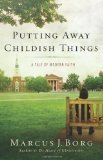 by Marcus Borg
by Marcus Borg ★★★★★ This is a story about believing, and Borg's first-ever novel may be among his best books. The main character, Bible scholar and professor Kate Riley, is a progressive Christian with a devotion as strong as any fundamentalist believer.
For a glimpse of how Kate lives as a Christian, we might peek into one of her lectures. In a discussion of whether the story of Adam and Eve is "true," Kate teaches, "The identification of truth with factuality is a cultural product of the Enlightenment. The success of the scientific method led many people to think of truth as what can be verified, and what can be verified came to be identified with facts. Within this framework, if something isn't factual, then it's not true." Kate explains her point a bit later, with a quote from Thomas Mann: "A myth is a story about the way things never were, but always are." She tells her students, "A myth is not about something that happened, that's not its point. But it's about the way things always are. And [Mann's] definition also provides a way of distinguishing true myths from false myths—a false myth is a story that's not about the way things are."
Perhaps writing fiction allowed Borg to dig down inside himself to personal levels that were not possible in his nonfiction works. He lays bare what life and Christian practice is like for a liberal Christian. As I said earlier, this book is about believing, a word that more traditional Christians have a hard time associating with progressive Christians. How can one have faith in God while at the same time denying a literal interpretation of the Bible? How can such a Christian claim to believe? Is a progressive (liberal) Christian a real Christian or a mockery of true Christianity?
Here is what makes this book fascinating to me: The climax of the story will prove disappointingly bereft of a climax for anyone who doesn't appreciate the tension of literal-versus-liberal Christianity. But for anyone trying to understand the progressive viewpoint, the climax is beautifully sculpted. Kate's transition by book's end into a "believer" is a perfect ending.
(click picture to buy on Amazon)

Published on June 03, 2011 06:51
June 2, 2011
2 Peter 1:16, Cunningly Devised Fables
For we have not followed cunningly devised fables, when we made known unto you the power and coming of our Lord Jesus Christ, but were eyewitnesses of his majesty.
//This verse carries a certain irony, since it was definitely not written by an "eyewitness." An unknown author, writing perhaps 50 years after Peter died, wrote in Peter's name and soundly criticized any interpretation of the Jesus story other than one of stark literalism. For nearly 18 centuries afterward, Christians accepted a literal interpretation of the Bible without question. Critical analysis was discouraged, and dissenters were cautious about expressing opposing views. Even in post-Enlightenment years, new strands of fundamentalist Christianity surfaced, and literalism dominated Bible scholarship. Then, in the 20th century, a plethora of critical scholars began to question the Bible's historical authenticity, interpreting many of its stories allegorically rather than literally. Books such as Esther and Jonah were recognized as non-historical, the virgin birth stories understood as parables, and so on. What brought about this new trend, and was it bad thing?
I'd like to emphasize that this new scholarship is not the result of trendy skepticism. It is rooted in several new developments in the 19th and 20th centuries that forced us to read the Bible differently. Some examples:
1. In the early 19th century, we learned to decipher cuneiform. It took time to conquer the various vocabularies, but by the end of that century we could accurately read Egyptian, Babylonian, and Assyrian records. Suddenly, the Bible was no longer our only readable record of the past. For the first time, we knew whether a biblical writer was writing real history, or using historical details as a backdrop for fiction or parable.
2. In the early 20th century, the discovery of Ugarit tablets made a tremendous impact on biblical studies. Now, we could read Canaanite literature, including poetry that proved nearly identical to Hebrew writings. Many of the Psalms are nearly word for word copies of earlier Canaanite poetry, borrowed from songs that were probably sung to the Canaanite god Baal. We began to recognize more fully the impact of neighboring nations on the development of Judaism.
3. More recently, the Dead Sea Scrolls have given us Hebrew texts as much as 1,000 years earlier than any we had before. We're no longer forced to read apocryphal books such as Jubilees and Enoch in Greek or Ethiopic translations, and can go directly back to the original Hebrew, as we learn about the period and beliefs from which Christianity emerged. Likewise, the discovery of papyri fragments of New Testament books several hundreds of years earlier than our earliest codices, pointed us closer to the original New Testament wording and meaning.
These literary findings are supplemented by scientific developments and archaeological discoveries, as both of these fields also flourished. We have convincingly verified many Biblical claims, while disproving other Biblical passages just as convincingly. Only if we continue to bury our heads in the sand can we continue to read the Bible as we used to. The last century has irrevocably changed the way we understand Christianity.
//This verse carries a certain irony, since it was definitely not written by an "eyewitness." An unknown author, writing perhaps 50 years after Peter died, wrote in Peter's name and soundly criticized any interpretation of the Jesus story other than one of stark literalism. For nearly 18 centuries afterward, Christians accepted a literal interpretation of the Bible without question. Critical analysis was discouraged, and dissenters were cautious about expressing opposing views. Even in post-Enlightenment years, new strands of fundamentalist Christianity surfaced, and literalism dominated Bible scholarship. Then, in the 20th century, a plethora of critical scholars began to question the Bible's historical authenticity, interpreting many of its stories allegorically rather than literally. Books such as Esther and Jonah were recognized as non-historical, the virgin birth stories understood as parables, and so on. What brought about this new trend, and was it bad thing?
I'd like to emphasize that this new scholarship is not the result of trendy skepticism. It is rooted in several new developments in the 19th and 20th centuries that forced us to read the Bible differently. Some examples:
1. In the early 19th century, we learned to decipher cuneiform. It took time to conquer the various vocabularies, but by the end of that century we could accurately read Egyptian, Babylonian, and Assyrian records. Suddenly, the Bible was no longer our only readable record of the past. For the first time, we knew whether a biblical writer was writing real history, or using historical details as a backdrop for fiction or parable.
2. In the early 20th century, the discovery of Ugarit tablets made a tremendous impact on biblical studies. Now, we could read Canaanite literature, including poetry that proved nearly identical to Hebrew writings. Many of the Psalms are nearly word for word copies of earlier Canaanite poetry, borrowed from songs that were probably sung to the Canaanite god Baal. We began to recognize more fully the impact of neighboring nations on the development of Judaism.
3. More recently, the Dead Sea Scrolls have given us Hebrew texts as much as 1,000 years earlier than any we had before. We're no longer forced to read apocryphal books such as Jubilees and Enoch in Greek or Ethiopic translations, and can go directly back to the original Hebrew, as we learn about the period and beliefs from which Christianity emerged. Likewise, the discovery of papyri fragments of New Testament books several hundreds of years earlier than our earliest codices, pointed us closer to the original New Testament wording and meaning.
These literary findings are supplemented by scientific developments and archaeological discoveries, as both of these fields also flourished. We have convincingly verified many Biblical claims, while disproving other Biblical passages just as convincingly. Only if we continue to bury our heads in the sand can we continue to read the Bible as we used to. The last century has irrevocably changed the way we understand Christianity.
Published on June 02, 2011 07:10
June 1, 2011
Book review: Jeremiah: The Last Days
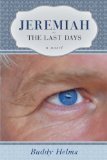 by Buddy Helms
by Buddy Helms★★★★
Buddy Helms is a pastor of Bethel Baptist Church in Big Lake, Texas, where he happily taught the popular pre-tribulation belief until a church member asked him an innocent question that drove him deep into the scriptures. He came away with a different understanding of the end times. This book provides Buddy the opportunity to teach us what he learned, through a fictional character named Jeremiah, a businessman who was called by God to give it all up and preach an unpopular message.
Says Buddy at the story's close, "If, as we claim, we are a people of the book, it is time that we returned to it." I agree, but in the battle between believers of pre-tribulation and post-tribulation rapture, I don't have a stake. In my own book about Revelation, I waffle on the subject, leaning slightly Buddy's way. Nevertheless, the theology of his book and its clarity is as important to me as the storytelling, so my rating is influenced upward by the way Buddy made me dig into the Bible.
I do have a criticism: When the last days arrive in the book, it shifts into fast-forward. The story becomes condensed and pretty much just rolls through the events described in the Bible, literally and without much elaboration. Perhaps if Buddy doubled the length and developed the plot more dramatically, it could turn from a four-star into a five-star story. On the other hand, his approach is understandable; neither the rapture nor the tribulation is the focus of Buddy's message. The chronology is. Buddy worries about the faith of complacent pre-trib believers who may someday find themselves experiencing opposition they never imagined.
I've wasted most of my space talking about the author (whom I find genuine and likeable), his motivation and theology. Sorry about that. I really did enjoy reading the fiction and could relate to the characters. The dialogue became a bit forced in places, but not overly so, and it didn't really matter; I was easily swallowed up into the storyline. I think Pastor Helms has found an excellent way of communicating the Bible's post-trib passages.
(click picture to buy on Amazon)
Published on June 01, 2011 07:50
May 31, 2011
John 12:1, 12:12, Inspecting the Passover Lamb
Six days before the Passover, Jesus came to Bethany, where Lazarus lived, whom Jesus had raised from the dead. … The next day the great crowd that had come for the Festival heard that Jesus was on his way to Jerusalem.
//Thus Jesus arrives in Jerusalem precisely five days before the Jewish Passover. In Jewish tradition, the Passover celebrates the day all of Egypt's firstborn were slain, while the Israelites were "passed over" by the killing angel. Every Israelite selected a lamb without spot or blemish, observed the lamb for five days to verify its perfection, then slit its throat and caught the blood in a basin. This blood was sprinkled on the entrance to their home, on both sides of the doorpost and above the doorpost, so that the killing angel would know to "pass over" the house.
Jesus' arrival in Jerusalem five days early is not a coincidence. All four Gospels insist the crucifixion occurs on or around the Passover, yet it might surprise you to learn that John is the only Gospel where Jesus is likened to the Passover lamb. In John, Jesus does not eat the Passover lamb with his disciples as he does in other Gospels, because in John, Jesus IS the lamb! (see http://www.dubiousdisciple.com/2011/04/john-1828-when-did-jesus-die.html) Jesus arrives in Jerusalem as the lambs are arriving for inspection, he dies at the same moment the lambs die. If you're the visual sort, you may even imagine him stretched upon a cross in the same manner as the lambs are stretched upon the spit.
For my flesh is real food and my blood is real drink. Whoever eats my flesh and drinks my blood remains in me, and I in them.
//Thus Jesus arrives in Jerusalem precisely five days before the Jewish Passover. In Jewish tradition, the Passover celebrates the day all of Egypt's firstborn were slain, while the Israelites were "passed over" by the killing angel. Every Israelite selected a lamb without spot or blemish, observed the lamb for five days to verify its perfection, then slit its throat and caught the blood in a basin. This blood was sprinkled on the entrance to their home, on both sides of the doorpost and above the doorpost, so that the killing angel would know to "pass over" the house.
Jesus' arrival in Jerusalem five days early is not a coincidence. All four Gospels insist the crucifixion occurs on or around the Passover, yet it might surprise you to learn that John is the only Gospel where Jesus is likened to the Passover lamb. In John, Jesus does not eat the Passover lamb with his disciples as he does in other Gospels, because in John, Jesus IS the lamb! (see http://www.dubiousdisciple.com/2011/04/john-1828-when-did-jesus-die.html) Jesus arrives in Jerusalem as the lambs are arriving for inspection, he dies at the same moment the lambs die. If you're the visual sort, you may even imagine him stretched upon a cross in the same manner as the lambs are stretched upon the spit.
For my flesh is real food and my blood is real drink. Whoever eats my flesh and drinks my blood remains in me, and I in them.
Published on May 31, 2011 05:33
May 30, 2011
Book review: Revelation: The Way it Happened
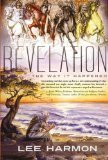 by Lee Harmon
by Lee Harmon ★★★★
I'm travelling today, on my way back from my son's wedding in Texas! May life be good to you and your wonderful wife, Ken! Mary Catherine is a treasure.
Seems like a good time to take a break from writing, and reprint a review of my own book. This review was posted on Amazon by reviewer Lee Halstead, and I appreciated it because it appealed to me as an honest appraisal by the type of Christian I hoped to reach with my book. I'm gratified to be able to present a side of Revelation that many people may not have considered. Here is a link to Lee's reviews.
Every Christian should read this book
As a new Christian 30 years ago, I was taught the evangelical Christian theological concept of "dispensationalism" and heard the usual interpretations of The Revelation and "end times" regarding the rapture, the tribulation and the second coming of Christ. I read Hal Lindsey's The Late Great Planet Earth and was satisfied with his explanation as it never occurred to me that his explanation (or any others) was merely his interpretation and that he could be wrong. As I grew in age and as a Christian, after reading The Revelation several times, many things began to bother me about what I had been taught and learned about it and I began to question popular "end time" teachings. I have hoped and prayed for an explanation that made sense and was excited to find this book. Author Lee Harmon has written it from the point of view of a Jewish Christian named Samuel and his teenage son Matthew, who live during the time of and have received a copy of The Revelation from John, its author. Samuel and Matthew discuss The Revelation verse by verse with much Jewish and Roman history, culture and events woven in. A fascinating and thoughtful read, it presents a possible and common sense explanation of The Revelation. I also have read Steve Wohlberg's "End Time Delusions", and highly recommend it, more for it's history of dispensationalism than anything, as I do not agree with a lot of Wohlberg's explanations for The Revelation. But his thorough and exacting history of dispensationalism and how it came to be incorporated into modern Christian beliefs should not be missed by any Christian. I am still digesting the content of these books and coupled with the knowledge we simply cannot know the future, I have just decided not to take a firm position as to being a "futurist, historicist or preterist." Instead, I am choosing to focus instead on living as a disciple of Christ in the present, as Christ said to.
(reprinted with permission)
More about this book can be found at http://www.thewayithappened.com

Published on May 30, 2011 06:06
May 29, 2011
Matthew 5:44, Love Your Enemies
"You have heard that it was said, 'Love your neighbor and hate your enemy.' But I tell you: Love your enemies and pray for those who persecute you, that you may be sons of your Father in heaven.
//Having grown up reading the Bible, Jesus' sayings don't sound so radical to me. But can you imagine how contrary they would have sounded to his first listeners? Today's verse is a perfect example, which goes against everything Jews were taught about righteous hatred. Take this verse as an example:
Psalm 139:21-21, Do I not hate those who hate you, O Lord? And do I not loathe those who rise up against you? I hate them with perfect hatred; I count them as my enemies.
Instead, says Jesus, do not resist an evil person. If someone strikes you on the right cheek, turn to him the other also. We're following the famous "sermon on the mount" in Matthew, and Jesus' transforming teachings at this time are of theological significance. The Jews anticipated a coming Messiah who would bring a new Torah, a new Law, superseding the Sabbath and its law. As Moses delivered the law to Israel from Mount Sinai, so does Jesus the Messiah stand upon a mountain and for three chapters in Matthew deliver a renewed law. Repeating the refrain, "You have heard that it was said … But I say to you …," Jesus gives new instructions with a much higher standard than the old law. This is the law for the new kingdom of God.
//Having grown up reading the Bible, Jesus' sayings don't sound so radical to me. But can you imagine how contrary they would have sounded to his first listeners? Today's verse is a perfect example, which goes against everything Jews were taught about righteous hatred. Take this verse as an example:
Psalm 139:21-21, Do I not hate those who hate you, O Lord? And do I not loathe those who rise up against you? I hate them with perfect hatred; I count them as my enemies.
Instead, says Jesus, do not resist an evil person. If someone strikes you on the right cheek, turn to him the other also. We're following the famous "sermon on the mount" in Matthew, and Jesus' transforming teachings at this time are of theological significance. The Jews anticipated a coming Messiah who would bring a new Torah, a new Law, superseding the Sabbath and its law. As Moses delivered the law to Israel from Mount Sinai, so does Jesus the Messiah stand upon a mountain and for three chapters in Matthew deliver a renewed law. Repeating the refrain, "You have heard that it was said … But I say to you …," Jesus gives new instructions with a much higher standard than the old law. This is the law for the new kingdom of God.
Published on May 29, 2011 06:46
May 28, 2011
Book review: Jesus, An Historical Approximation
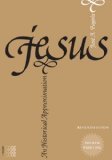 Jose A. Pagola
Jose A. Pagola ★★★★★
Who was the Jesus of history? A wandering sage? A penniless do-gooder? An apocalyptic preacher?
If you're tired of all the one-dimensional labels and want to find the real Jesus, this is the right book. Pagola begins by affirming his devotion to the Catholic Church, and his analysis overemphasizes canonical scripture just as one would expect of a confessing Christian, but this is not a book about the "Christ of Faith." While resorting to neither evangelism nor sensationalism, Pagola tells the simple story of a very human Jesus, his beliefs, dreams, ambitions, and values. I'm well-read on the topic of the historical Jesus, and I have to say, I am very impressed by the picture Pagola paints. This is about as down-to-earth as any exposition of the life of Jesus I've ever read. Any more down-to-earth would be dishonest, for Jesus truly was exceptional. The result may be the most inspiring book I've ever read about Jesus.
This is a Jesus who desperately wants his audience to embrace what he calls the reign of God, or the kingdom of God, and who gently teaches in parable and example how it can come about. It's a historical Jesus that is, finally, believable and consistent with the picture provided in both scripture and history. It is a Jesus we can both love and admire. A Jesus whose teachings might actually explain the following that sprang up after his death. But still a very human Jesus, with real problems.
"Jesus put the honor of his family at risk when he left. His vagabond's life, far from home, without fixed employment, performing exorcisms and strange healings, and proclaiming a disturbing message without authorization, brought shame to the whole family."
Clearly, this book is not about Christianity. Not until the final pages of the book does Pagola discuss the religion which sprang up in Jesus' name, or the apocalyptic expectations that arose through messianic dreams, and that short discussion of the post-resurrection Jesus may be the only place where I disagree much with Pagola's research, finding it too simplistic. He gives the impression (perhaps not intentionally) that the meaning of Jesus' life and resurrection were interpreted similarly by all early followers. Elsewhere, whenever Pagola's view differs from my own, his view is the one leaning toward the consensus of other scholars, and I guess that's a good thing. I'd put it like this: Pagola has carefully extracted the meat from contemporary Jesus scholarship and flavored it with common sense.
(click picture to buy on Amazon)
Published on May 28, 2011 06:22
May 27, 2011
Joshua 11:10, Joshua slays Jabin
At that time Joshua turned back and captured Hazor and put its king to the sword.
//Joshua accomplished some incredible victories, but this one may be the most miraculous of all time. Nine verses before this, we learn the name of the king Joshua killed: Jabin, king of Hazor. Everyone of the city was slaughtered, "utterly destroyed," and the city was burned.
The book of Judges, chapter 4, tells us a little more about king Jabin and the city Hazor. "So the LORD sold them [Israel] into the hands of Jabin, a king of Canaan, who reigned in Hazor."
Backing up to chapter 3 of Judges, and we find two periods of rest. One is for forty years, another for fourscore years. 120 years that Israel had peace before Jabin's time.
Now back up further to chapter 2, verse 8: "Joshua son of Nun, the servant of the LORD, died at the age of a hundred and ten." Thus begins the period when "Israel did evil in the eyes of the Lord," leading chronologically to the reason the "Lord sold them into the hands of Jabin."
Joshua's greatest miracle: He slew Jabin, king of Hazor, 120 years after his own death!
//Joshua accomplished some incredible victories, but this one may be the most miraculous of all time. Nine verses before this, we learn the name of the king Joshua killed: Jabin, king of Hazor. Everyone of the city was slaughtered, "utterly destroyed," and the city was burned.
The book of Judges, chapter 4, tells us a little more about king Jabin and the city Hazor. "So the LORD sold them [Israel] into the hands of Jabin, a king of Canaan, who reigned in Hazor."
Backing up to chapter 3 of Judges, and we find two periods of rest. One is for forty years, another for fourscore years. 120 years that Israel had peace before Jabin's time.
Now back up further to chapter 2, verse 8: "Joshua son of Nun, the servant of the LORD, died at the age of a hundred and ten." Thus begins the period when "Israel did evil in the eyes of the Lord," leading chronologically to the reason the "Lord sold them into the hands of Jabin."
Joshua's greatest miracle: He slew Jabin, king of Hazor, 120 years after his own death!
Published on May 27, 2011 07:16
May 26, 2011
Book review: The Book of J
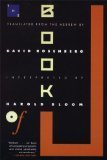 by Harold Bloom and David Rosenberg
by Harold Bloom and David Rosenberg★★★★★
Here's another of my favorites, published back in 1990. If you haven't read it yet, it's a must read, for the sheer pleasure of it.
Most scholars now accept that the Torah was written by at least four different authors. The first strand of Genesis, Exodus and Numbers was written by an author that scholars call "J," who lived in the tenth century BC. This is your chance to read J's story as it was written, extracted and reassembled from the Bible. Bloom admires J on the level of Homer, Shakespeare, and Tolstoy, and wonders if J wasn't a woman. J's story abounds in unforgettable characters and subtle irony, including a God (Yahweh) whose personality is unmatched by any later writers.
In the first half of the book, the text of J is translated brilliantly by Rosenberg, who brings the scripture to life. Then, Bloom takes the reins and provides commentary in the second half. If you have never read any of Bloom's writings, you're in for a treat. Wry and fresh, Bloom is one of my favorite authors.
J, as Bloom points out multiple times, is no moralist. Sin is not one of J's concepts, but contempt is. Irony is. J will stoop to puns and rise to heroism if it helps portray her characters. You'll forget you're reading the Bible as you get lost in the storytelling, I promise. I can't think of enough good adjectives to describe this one.
(click picture to buy on Amazon)
Published on May 26, 2011 06:22



